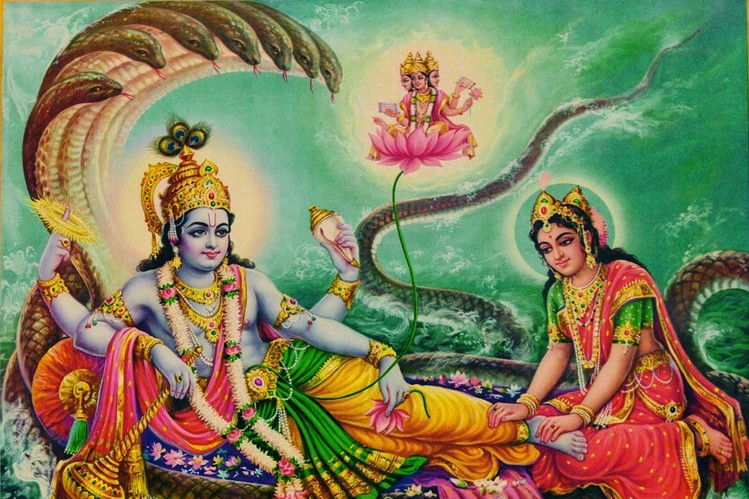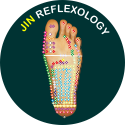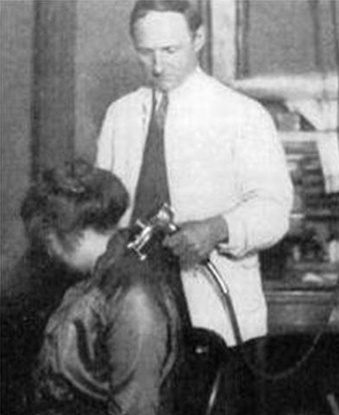Reflexology

This ancient picture shows that time also used this therapy in India for healing. At the Feet of the Gods: a very early picture of foot work being offered. Lakshmi working the feet of the Hindu god Vishnu.
Secrets of Reflexology are hidden in age-old Indian customs and traditions. To highlight how old Reflexology is and its origin place which is India, this picture is enough.
This picture shows Lord Ram and Sita together. It shows one of the customs of ancient time. When elders used to come from outside, their feet were washed before their entry to home. The reason of washing the feet was that negative energy might not penetrate inside and their day-long fatigue might disappear. Then you realize that every conduct of our culture holds greater significance and how it was related to our healthy lifestyle.
EGYPT One of the oldest documentations of foot zoning can be found in Egypt. After touring Egypt in 1979, Ed and Ellen Case of Los Angeles brought back an ancient Egyptian papyrus scene depicting medical practitioners treating the hands and feet of their patients dating 2,500 BC. Here is a commercial reproduction of the pictograph found in the Physician’s Tomb in Saqqara, Egypt Ankhmahor’s tomb in Saqqara, Egypt. The hieroglyphic above the scene reads: “Do not let it be painful.” With a reply, “I do as you please.” There is further evidence that can be found on the tomb walls of the Physician Ankhmahor. Located in the tomb are six carvings depicting, childbirth, pharmacology, embalming, circumcision, dentistry and foot zoning.
2nd century B.C.: is the early evidence from the “Historical records” written by Sima Qian of Chinese Reflexology dates back to the when Dr. Yu Fu (in Chinese Yu means healing and Fu means foot) treated patients without herbs and acupuncture but concentrated on massage, and “the illness responded to every stroke of his”.
250 B.C.: Dr. Waldemar E. Sailor has searched for Buddha footprints for twenty-five years and has located them in Afghanistan, Bhutan, Cambodia, China, India, Japan, Korea, Laos, Malaysia, the Maldives, Pakistan, Singapore, Sri Lanka, Thailand and the Union of Myanmar. Each footprint symbols were different some did not have any symbols, it meant a different time and culture.
790 A.D.: the stone carving of Buddha’s foot, with Sanskrit symbols on the sole, was found at the Medicine Teacher Temple in Nara, Japan.
1275-1292: Marco Polo traveled China and the Dominican and Franciscan missionaries, they are credited with bringing the ancient Chinese massage technique into Europe.
1582: Dr. Adamus and Dr. A’tatis wrote a book on Zone therapy
1583: Dr. Ball from Leipzig wrote a book on Zone therapy
1690’s: Jim Rolls a Cherokee Indian; said pressure therapy on the feet to restore and balance the body has been passed down through the generations. A Cherokee Indian, Jenny Wallace from Blue Ridge Mountains North Carolina says the clan of her father (Bear Clan) believes feet are important. “Your feet walk upon the earth and through this your spirit is connected to the universe. Our feet are our contact with the Earth and the energies that flow through it.”
1771: German physiologist Johann Auguest Unzer published his work about motor reactions and used the term “reflex”.
1833: English physician and physiologist Marshall Hall who was the first to explain the term “reflex action” because of the result of his experiments on animals. He studied the medulla oblongata and the spinal cord and their reflex actions. He stated “That the spinal cord is comprised by a chain of units that functions as an independent reflex arcs, and their activity integrates sensory and motor nerves at the segment of the spinal cord from which these nerves originate”.
1870’s: Ivan Sechenov the founder of Russian physiology wrote a book called “Reflexes of the Brain”. He brought electrophysiology into the laboratory and taught this method. The Russian physician Dr. Ivan Pavlou founder of Russian Brain Institute used Zone therapy.
Pavlov was very interested into the research of physiology of animal digestion led him logically to create a science of conditioned reflexes. He expanded on his research into the physiology of animal digestion and the subsequent articulation of “a science of conditioned reflexes” He was awarded the Nobel Prize in 1904 for his work on the pancreatic nerves. He lectured about the conditioned reflexes.
1878: French physician M.J. Babinski, wrote an essay called “A Phenomenon of the Toes and its Symptomatological Value”. In 1896 he wrote another essay with his new findings called “Planar Cutaneous Reflexes in Certain Organic Conditions of the Central Nervous System”.
Dr. T. Lauter Brunton wrote a paper for the Brain, A Journal of Neurology called “Reflex action as a Cause of Disease and Means of Cure”.
1880’s: English Neurologist Sir Henry Head a doctor of medicine at Cambridge for his thesis on pain in visceral disease. He later published an article in the Brain, A Journal of Neurology titled “On disturbances of Sensation with Especial Reference to the Pain of Visceral Disease”.
He discovered “Head Zones”, and also proved that pressure applied to the skin and its effect on the internal organs. He wrote “The Bladder can be excited to action by stimulating the sole of the foot, and movements of the toes can be revoked by filling the bladder with fluid”.
1890: Germany physician Dr. Alfons Cornelius tried reflex-massage on certain areas of his body to cure his own disease. He noted when he worked out the painful areas. In 1902 he published a book called “Pressure Points, their Origin and Significance”.
1907: Russian neurophysiologist and psychiatrist Dr. Vladimir Bekhterev who studied the formations of the brain and investigated conditioned reflexes. He was the founder of psycho reflexology. He also started the term “reflexology” in 1932 and lectured the “General Principles of Reflexology”.
1909: American physician Dr. William Fitzgerald a respected ear, nose, throat surgeon from Connecticut was teaching in Vienna in the same city and time frame Dr. Alfons Cornelius published his book “Pressure Points, their Origin and Significance”.
When he came back to America he used Zone therapy to deaden pain, replacing drugs in minor operations. He treated lumps in the breast, uterine fibroids, respiratory problems, and eye conditions. There was controversy on zone therapy from 1915-1930’s but eventually it met an amount of success with doctors and dentist. He is accredited for the woodcut body that has the ten zones divided.
1911: German physician Dr. Barczewski introduced “action honoring book of my Reflex massage”.
1915: Dr. Bowers wrote an article called, “To Stop that Toothache, Squeeze your Toe”. It was published in Everybody’s magazine.
1917: Dr. Edwin F. Bowers encouraged and helped Dr. Fitzgerald to write his first book called “Relieving Pain at Home”.
The development and practice of reflexology in the 20th Century is a result of the studies in the United States on zone therapy, the application of pressure applied to specific points on the body such as the feet, hands and face to relieve pain and improve function in other parts of the body.
Pressure Therapy
In 1902 Fritzgerald was drawn to pressure therapy when he discovered that pressure, applied to certain points on the body, could relieve pain and improve function in other parts of the body.
He divided the body into 10 longitudinal zones that run from the head to the toes and fingers thereby linking parts of the body in that zone and observed that the application of pressure to specific areas corresponded to pain relief in different areas of the body in that zone.
Dr Joe Shelby-Riley ran the Riley School of Chiropractic in Washington DC. When Dr Fitzgerald and his colleagues came to lecture to Dr Riley’s students, he became interested in the subject of Zone Therapy. He and his wife, Elizabeth Ann became students of Dr Fitzgerald.
Reflexes/Pressure Points/Hook technique – Dr Riley also included the hands and ears in his work with reflexes and zones and added eight horizontal divisions to the zones of the feet and hands. He made the first detailed drawings of reflexes or pressure points on the feet and hands, that suggested the shape of a human body.
Sir Charles Sherrington – An English neurophysiologist, histologist, bacteriologist, and a pathologist did extensive research into neurons and nerve function.
In his book The Integrative Action of the Nervous System, published in 1906, Sherrington demonstrated how the nerves co-ordinate and dominate the functions of the body showing the process in which the brain, spinal cord and numerous reflex pathways control the activities of the body.
In 1932, Sir Sherrington received the Nobel Prize for his work on neurons, specifically “proprioceptive action”. He shared the Nobel Prize with an English doctor, Edgar Adrian whose research had shown that the intensity of nerve stimulation was due to the size of the nerve, and not to the amount of pressure applied. This also had an impact on the development of modern reflexology techniques.
Development of Modern Reflexology techniques – Although the Original Ingham Method® and chart is used world-wide other prominent reflexology trainers in various countries contributed to the development of a number of new reflexology techniques. The nurse and physiotherapist, Eunice Ingham worked for Dr. Riley in St. Petersburg, Florida.
Zone Therapy/Foot Reflexology – In 1925, Ingham developed zone therapy into foot reflexology. In the early 1930’s she started developing her foot reflex theory and applied pressure to particular points across the soles of the feet. She discovered that this technique stimulated and helped the body to heal, rather than to provide only pain relief. After extensive research she found that the feet and hands were especially sensitive to pressure. After further study Ingham made a distinct separation between working on reflex points and zone therapy.
Map of the feet She developed a map of the feet with all the corresponding organs and glands of the body and called it compression therapy before naming it reflexology.
Pressure Technique – She developed the alternating pressure technique used by most reflexologists today and became known as the mother of modern reflexology and a trainer of reflexology. She travelled around the USA, gave lectures and seminars in Foot Reflexology first to medical staff, and then to non-medical practitioners. Published books: Stories The Feet Can Tell Through Reflexology [1938]; Stories the Feet Have Told Through Reflexology [1951]
In December 1974, Eunice passed over at the age of 85 years. She had dedicated her life to helping others and was totally committed to the benefits of Reflexology.





